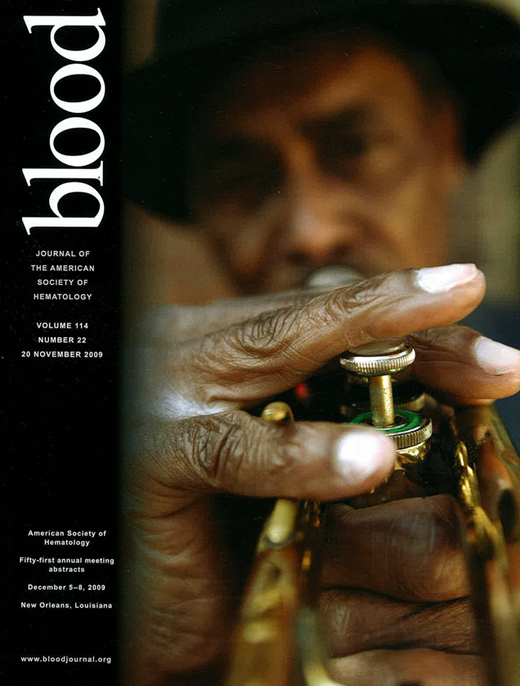Abstract
Abstract 668
In vivo studies of deuterium (2H) incorporation into newly-synthesized DNA of chronic lymphocytic leukemia (B-CLL) B cells indicate that the disease is dynamic, with ongoing birth and death of individual members of a leukemic clone. Therefore, a detailed phenotypic analysis might define the “life cycle” of subpopulations of leukemic cells within a B-CLL clone, thereby identifying recently-born members and members born earlier. Such an extended phenotype could enable structural and genetic characterization of the intra-clonal heterogeneity that birth and death create, and thereby help understand the biology of B-CLL cells and define novel cell surface markers or marker combinations as therapeutic targets.
Our previous studies indicated that B-CLL clones could be subdivided into three populations based on relative densities of expression of CXCR4 and CD5. The CXCR4dimCD5bright subpopulation is enriched in cells with 2H-labeled, newly-synthesized DNA and contains significantly more Ki-67+ and MCM6+ cells than CXCR4intCD5int cells within the same clone. These latter cells in turn are enriched for the same parameters compared to the CXCR4brightCD5dim fraction. We have now identified other markers associated with the CXCR4dimCD5bright subpopulation (“proliferative compartment”) and the CXCR4brightCD5dim (“resting/re-entry compartment”) in B-CLL. PBMC from 20 B-CLL cases were subjected to multi-parameter immunofluorescent, flow cytometric analyses to define the expression of CD11a, CD20, CD23, CD27, CD38, CD47, CD49d, CD52, or Fcƒ×RII on the CD19+CXCR4dimCD5bright and CD19+CXCR4brightCD5dim B-CLL cell subpopulations. Companion studies were performed on Ki-67+ and Ki-67- subpopulations. Finally, gene expression profiling was performed on CXCR4dimCD5bright, CXCR4intCD5int, and CXCR4brightCD5dim subsets of 12 B-CLL cases using the Illumina HumanWG-6 platform.
Compared to CXCR4brightCD5dim cells within a clone, the CXCR4dimCD5bright compartment contained significantly more cells expressing CD23, CD52 (both p<0.0001), CD11a (p<0.001), CD20, CD38 (both p<0.01) and CD49d (p<0.05). In addition, this same fraction expressed significantly higher densities of Fcƒ×RIIb (p<0.0001), CD23, CD52 (both p<0.01), and CD11a (p<0.05). Gene expression profiles comparing the two subsets revealed over 1,309 significant differences. Functional activities associated with these genes differed dramatically between the two compartments. Of the top 25 over-expressed genes in the CXCR4dimCD5bright proliferative compartment, 11 related to proliferation (e.g., NAPSA, MARCKS, CCND2), 10 were involved in cell signaling and activation (e.g., GPR183, ADAP1), and 4 related to cell movement and migration (e.g., CXCR3). In the CXCR4brightCD5dim resting/re-entry compartment, 12 of the 25 most overexpressed genes were involved in apoptosis and cell death (e.g., RXR2, HRK), 7 in cell signaling (e.g., ADARB1, RAB37) and 5 in cell movement and migration (e.g., MDK, IRS2).
These studies defined a reciprocal, extended surface membrane phenotype that distinguishes cells of the proliferative and the resting/re-entry compartments in B-CLL. This phenotype is based both on the percent of expressing cells and on the density of expression of well-defined surface molecules. In addition, gene expression analyses identified genes differentially expressed between the two compartments. These data support the notion that cells in these two compartments are a phenotypic continuum, with the former having divided recently and trafficking from the location where division occurred and the latter having divided earlier, being less robust, and attempting to traffic back to a lymphoid microenvironment to obtain survival signals. We suggest that targeting these two populations with appropriate monoclonal antibodies, many of which are currently in clinical trials in B-CLL and other B-cell lymphoproliferative disorders, may have a beneficial effect. Although this approach may not immediately diminish the bulk of the leukemic mass, it would preferentially eliminate the small fraction of cells that sustains a B-CLL clone and the fraction of cells that maintain a B-CLL clone after receiving survival signals, thereby permitting the remaining cells to die spontaneously.
Allen:Antisoma: Research Funding.
Author notes
Asterisk with author names denotes non-ASH members.

